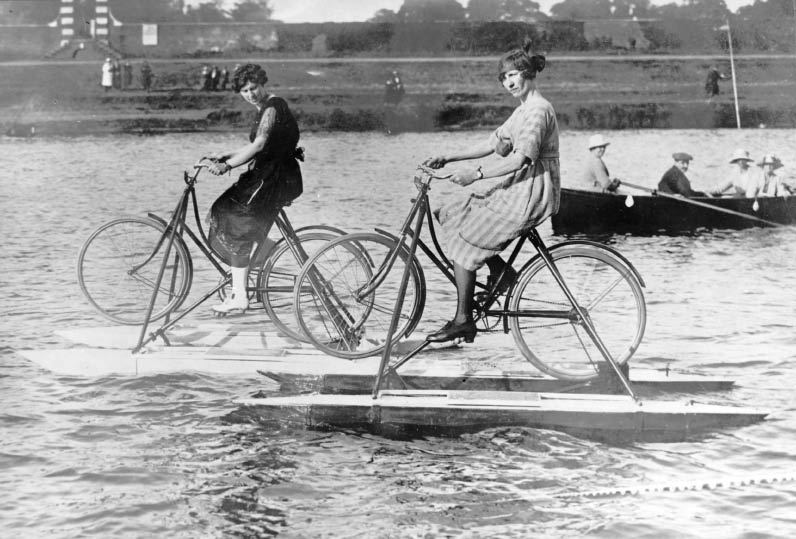There are among us a churlish few who consider the term ‘sports personality’ to be an oxymoron.
There are among us a churlish few who consider the term ‘sports personality’ to be an oxymoron. John Foot’s sparkling study of Italian cycling is a welcome corrective, alive with terrific characters: Toti, a heroic one-legged cyclist who was killed in the trenches; Coppi, a barrel-chested adulterer who became the nation’s darling; a blind coach who could divine victory or defeat in the feel of a cyclist’s muscles; and, more recently, a champion who died of a cocaine overdose in a seaside hotel. Many of the greats follow a satisfying rags-to-riches trajectory, starting off as impoverished delivery boys from peasant families.
Foot’s contention is that the history of cycling is a lens through which the political and social history of Italy itself can be viewed. Thus he cites the red cyclists, whose first national congress took place in 1913, for whom bikes were a new weapon in the class struggle. Cycling came to be thought of as so subversive that, at one point, priests were forbidden to ride bikes. Later there were cyclists with links to the fascist party, but it is evidently a grave disappointment that Mussolini himself had absolutely no interest in the sport. Foot revisits the fact again and again, as if repetition will make it otherwise, like a hungry teenager who keeps going back to an empty bread bin.
With still 100 pages to go, the author announces:
This history should end at some point in the 1980s and 1990s for one simple reason: from here on, this will no longer be a book about cycling . . . Rather, we enter a shadowy world of blood transfusions, hormones, testosterone, cocaine, arrests, protests, masking agents, police swoops and sacks of blood in Spanish fridges.
The sporting authorities seem oddly clawless where doping is concerned, perhaps because, like prison officers, it is not in their best interests to clean things up. Every now and again there is a flurry of dope testing and punishment, but such regulation seems inconsistent and half-hearted.
John Foot, who is Professor of Modern Italian History at University College London, is erudite and spry: to succeed in making this book appealing to the non-enthusiast is quite a feat. The key to his success lies with the larger-than-life characters who people these pages. Among my favourites is Luigi Malabrocca, who in the 1940s enjoyed a flurry of fame and fortune in the annual Giro (the Italian equivalent of the Tour de France). Cash prizes began to be awarded to the last rider, who wore a black vest. Malabrocca saw the financial sense in this and often stopped en route to have a drink or two, or have dinner with fans along the way. Other riders began to vie for the black vest, leading to absurd competitive dawdling. I cannot agree that the ‘the greatest individual sporting rivalry the world has ever seen’ was between a pair of Italian cyclists called Coppi and Bartali, but it’s a good story nonetheless.
Bella Bathurst’s book is more general, combining some of the history of the bike with interviews and anecdote. Every sport has its Hamlet: in the world of cycling this is the charismatic Graeme Obree. Bathurst’s account of meeting him is fascinating, but her relish in all things bikey can overwhelm her judgment, and some of the other interviews are a bit plodding. People say things like, ‘It’s massive mentally, it’s huge’: city cyclists complain about car drivers; courier-riders about taxis. ‘More than any other competitive sport, cycling requires its practioners to be clever,’ she writes. Devotees of spin-bowling will beg to differ.
The most striking thing Bathurst has unearthed is, for me, the story of Zetta Hills, who in 1920 caused a sensation when she pedalled a water cycle 15 miles down the Thames, from Richmond to central London. Later she cycled across the English Channel. A photograph, reproduced above, shows Miss Hills on the water, in fetching pale stockings, white lace-ups and a mid-calf length frock. The bike is just like a proper, old-fashioned woman’s bicycle, with the rider borne upright and apparently dry along the water. This seems such a marvellous invention that I at once went in search of a contemporary model. Happily they are still manufactured and, interested readers will be glad to learn, there is a UK stockist. We can only hope that Boris Johnson’s London bikes will soon be joined by a flotilla of these wonderful conveyances.






Comments